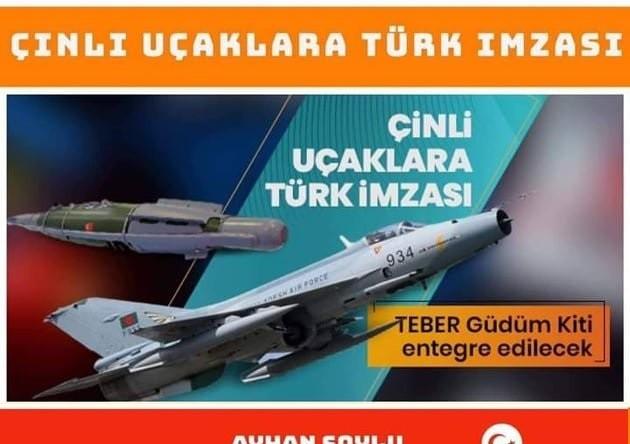On January 19, Bangladeshi media confirmed that the TEBER precision guided bombs ordered by the Bangladeshi Air Force from Turkey had been delivered, and the propaganda posters of the Turkish manufacturer showed that the guided bombs were mainly equipped with the J-7BGI fighters of the Bangladesh Air Force. The precision guided bomb purchased by Bangladesh for the J-7 is the Thunderstone 6 satellite guided gliding bomb of the mainland's foreign trade, because they are all domestic manufacturers, so the airborne fire control crosslinking ammunition is more convenient. Now after the Turkish-made munitions are changed, this involves the crosslinking of fire control and ammunition, so it is worth paying attention to.

Pictured: Propaganda posters on the Turkish side
Pictured: TEBER 81 and 82 guided bombs
Pictured: Bangladesh Air Force J-7BGI carrying a Thunderstone 6 satellite-guided glide bomb
Turkey's TEBER precision-guided bombs are based on U.S.-made MK81 and MK82 aerial bombs, using a combined guidance kit. The kit includes a laser semi-active seeker mounted on the head and a rudder wing correction chamber mounted on the rear of the bomb with GPS/inertial navigation system. Although the kit does not have a folding glider like thunderstone 6, it can also perform a certain amount of gliding, and the maximum gliding distance when thrown at a high altitude can reach 28 kilometers. In terms of guidance, it is possible to use inertial guidance plus GPS correction throughout the process, and it can also add third-party laser irradiation at the end of the target, the former's strike accuracy is in the 10-meter level, and the latter can be improved to less than 3 meters.
In terms of performance, this Turkish-guided bomb is still good, but to exert the power of precision strikes, it also needs the cooperation of the carrier fire control system. For example, the guided bomb needs to be aligned with inertial guidance before dropping the bomb, and the correct navigation coordinate system is established, and the alignment benchmark is the inertial navigation system data of the carrier aircraft, and the target coordinate data also needs to be loaded before the bomb is dropped, otherwise the bomb does not know where to fly. All this requires that the airborne fire control must be able to communicate with the data of the guided bomb before dropping the bomb, the bomb can obtain the initial inertial guidance information and target information from the fire control of the carrier aircraft, and the airborne fire control can also read the status information of the bomb, so as to determine the conditions for achieving the bombing.
Pictured: Bangladesh's J-7BGI has a high avionics and hardware configuration
Pictured: The Iranians tackled the old Su-22M4 with the latest Yasin satellite-guided bomb when the specially fitted fire control end was added
From the perspective of avionics and airborne fire control hardware, the J-7BGI support for Turkey's TEBER guided bomb should be said to be no problem. Because it is the latest birth of the J-7 variants of foreign trade using nose intake, it is also the best avionics configuration. Its avionics are said to have reached the level of the quasi-third generation, and it is also the highest degree of glassing among the J-7 variants of foreign trade injected by the nose. However, whether the fire control software can support the TEBER guided bomb is difficult to say, if this is to be solved, it will require the support of domestic manufacturers or the Turks themselves to crack the avionics of the J-7BGI. Of course, there is also a solution, that is, the Turkish manufacturers to the cockpit of the J-7BGI with a separate portable fire control terminal, not with the J-7BGI fire control crosslink. This portable fire control is usually used for the ability of the old avionics to modify the guided bomb, and it is also used for the situation that the avionics of the fighter cannot or do not want to crack the avionics of the fighter, such as the GB series precision guided bombs of the mainland foreign trade are equipped with similar portable fire control ends. At present, it is not known how the Turks solved the problem of crosslinking the J-7BGI and TEBER.